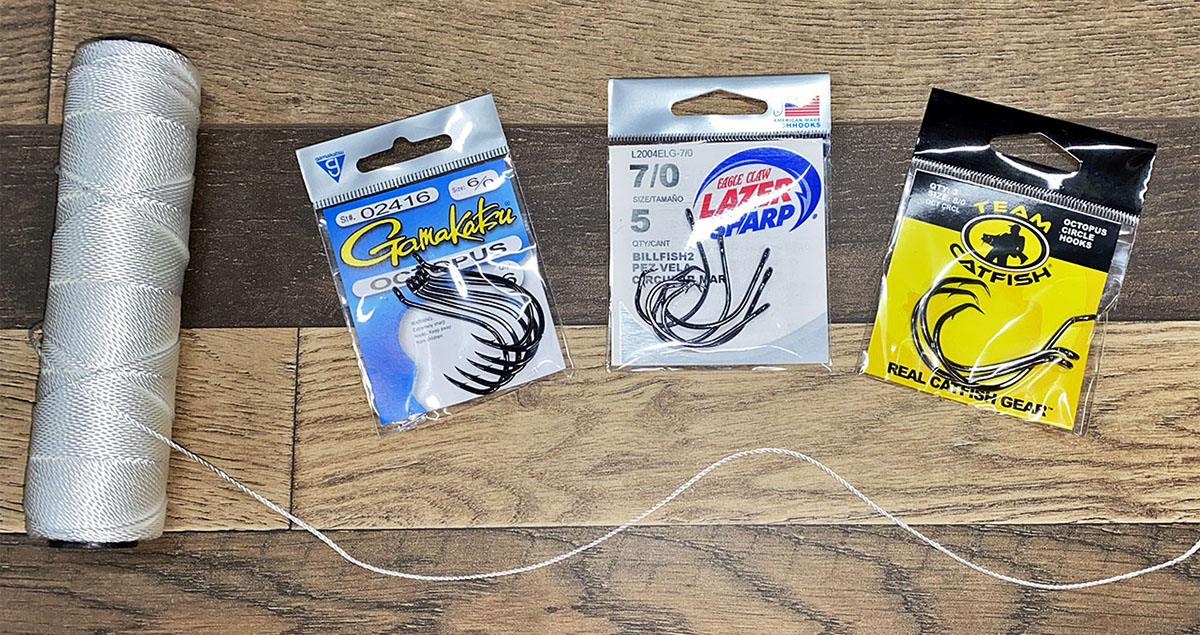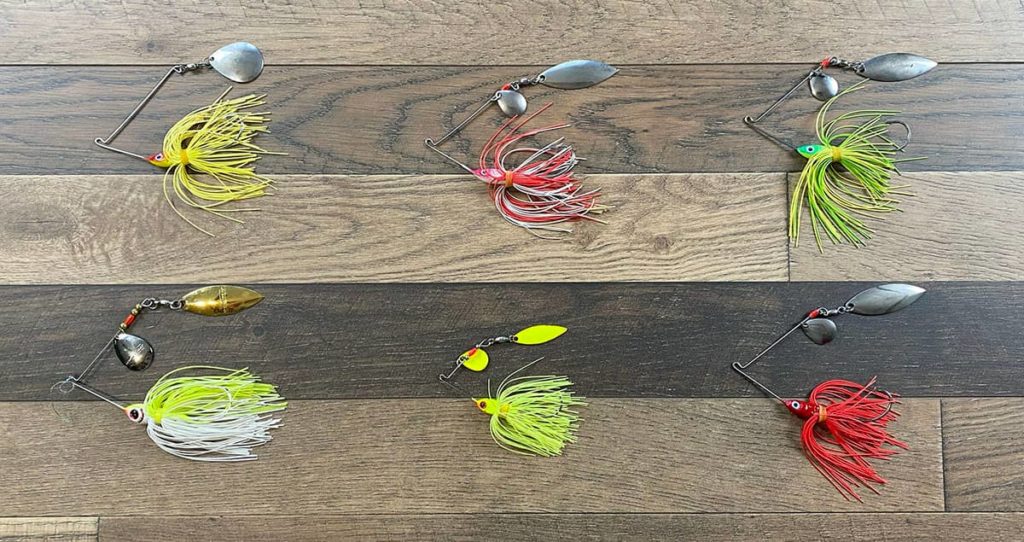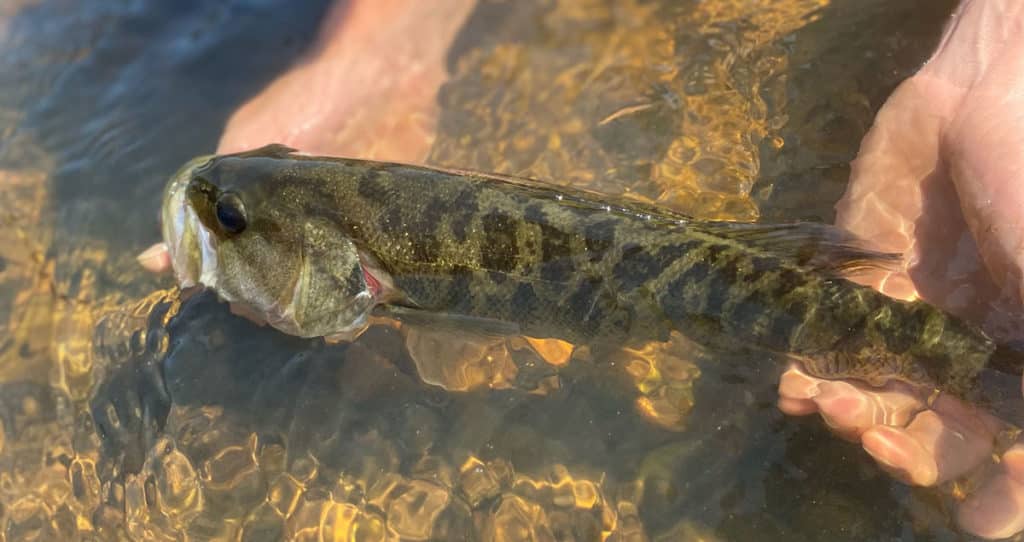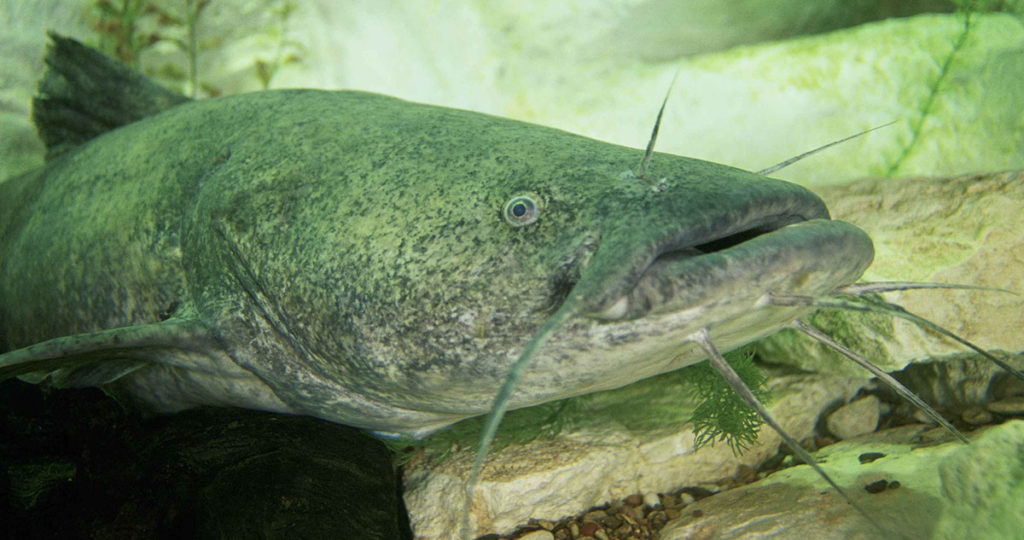Planning a big fish fry? There’s no better way to fill the fryer with delicious catfish fillets than with a good, old fashioned trotline. To ensure there’s plenty of fried fish to go around, however, you need to make sure you set up your trotlines correctly. And a critical component of an effective setup is choosing the right hooks.
In this comprehensive guide, we’ll explore the best trotline hooks available on the market and provide essential information to help you make the most informed choice.
Types of Trotline Hooks
When selecting trotline hooks, consider the size, shape, and material. Each hook has specific advantages and is better suited for different species and situations. The main types of hooks used for trotlines include:
Circle Hooks
When it comes to hooks for trotlines, my absolute favorite are circle hooks. As the name implies, circle hooks are configured in a circular shape with the hook point curving inwards towards the shank, rather than pointing straight out or away from it. This inward curve of the point makes it harder for the hook to accidentally penetrate the fish’s gut or gills, minimizing the risk of killing the fish prematurely.
Circle hooks work based on a fish’s natural tendency to swallow the bait. When a fish takes the bait, the hook is pulled back towards the fish’s mouth as the line tightens. As the hook approaches the fish’s mouth, its circular shape allows it to slide out without penetrating the softer tissues of the fish’s throat, gut, or gills.
Once the hook reaches the edge of the fish’s mouth, the curved point catches on the lip, corner of the mouth, or jaw. This is where the hook sets itself as the fish continues to apply pressure on the line.
The circular design ensures that the hook’s point faces away from the fish’s mouth, minimizing the chances of the hook point piercing any internal organs. This method makes circle hooks ideal for unmanned applications like trotlines, limb lines and jug lines.
Circle hooks often come in two styles: offset and non-offset. Offset hooks have the point slightly angled away from the shank, while non-offset hooks have the point parallel to the shank.
Some popular circle hooks for trotlines include:
- Gamakatsu Octopus Circle Hooks
- Team Catfish Double Action Circle Hooks
- Eagle Claw Lazer Sharp Circle Hooks
J Hooks
J hooks have a classic design, with the hook point and shank forming a “J” shape. They are your classic fishing hook that you’ve probably been using your whole life. J hooks typically require the angler to set the hook by quickly jerking the line, but they can work on unattended trotlines as well.
If you already have J hooks on hand or if you purchase a trotline that already has J hooks installed, then I wouldn’t go through the trouble of replacing them. Just keep in mind that you’ll likely miss a few more fish with J hooks.
Some popular J hooks for trotlines include:
Kahle Hooks
Kahle hooks can be an excellent option for trotlines in specific situations, as their design combines some of the best features of circle and J hooks. Their wide gap and unique bend allow for effective hooksets while minimizing the chances of gut-hooking the fish. Consider using Kahle hooks on your trotline under the following circumstances:
- Targeting Catfish: Kahle hooks are particularly effective for catching catfish, including flatheads, blue catfish, and channel catfish. The design of Kahle hooks allows them to accommodate the catfish’s larger mouth, making it easier to achieve a solid hookset in the corner of the mouth or jaw.
- Live Bait: When using live bait, such as shad, bluegill, or crawfish, Kahle hooks can be an ideal choice for a trotline. Their wide gap and slightly offset point can securely hold the bait while allowing it to move naturally in the water, enticing fish to strike.
- Semi-Attended Trotlines: While Kahle hooks don’t require as much attention as J hooks when it comes to setting the hook, they still benefit from being checked more frequently than a trotline with circle hooks. If you plan to semi-attend your trotline, Kahle hooks can provide a balance between the active hook-setting of J hooks and the passive self-hooking of circle hooks.
In summary, Kahle hooks can be an ideal option for a trotline when targeting catfish, using live bait, or fishing in snag-prone areas. They offer a combination of the best features of J and circle hooks, making them a versatile choice for various fishing situations.
Some notable Kahle hooks for trotlines include:
Factors to Consider When Choosing Trotline Hooks
Hook Size
Selecting the appropriate hook size is crucial, as it determines the size of the fish you can catch. Smaller hooks are suitable for catching smaller species, while larger hooks target bigger fish. The size of your hooks should be based on the fish species you intend to catch, as well as the size and type of bait you plan to use.
Material and Finish
High-quality hooks are made from materials that resist corrosion, such as stainless steel, high-carbon steel, or chemically sharpened steel. Hooks can also have various finishes, including bronze, nickel, or black, which help prevent rust and enhance their durability. Consider your fishing environment and the potential exposure to saltwater or freshwater when choosing the material and finish of your trotline hooks.
Hook Strength
The strength of a hook is determined by its wire diameter and overall construction. For larger and stronger fish species, you’ll need a heavier, thicker wire hook. Conversely, lighter wire hooks are suitable for smaller fish. Keep in mind that heavier hooks may require additional weight to keep the bait submerged, while lighter hooks may not provide enough resistance for larger, more powerful fish.
Hook Gap
The hook gap is the distance between the shank and the hook point. A larger gap increases the likelihood of hooking the fish, while a smaller gap is less likely to snag debris or vegetation. Choose a hook with an appropriate gap size based on the bait you’ll be using and the target fish species.
Barb vs. Barbless Hooks
Barbed hooks have a small protrusion near the hook point that prevents the hook from slipping out once it has penetrated the fish’s mouth. While barbed hooks provide a more secure hold, they can cause more damage to the fish, making catch and release more challenging. Barbless hooks, on the other hand, are easier to remove but require constant tension on the line to prevent the fish from escaping. Consider the type of fishing you’ll be doing and whether catch and release is a priority when selecting barbed or barbless hooks.
Bait Holder
Some hooks have additional features to help secure the bait, such as bait holder barbs or a slight bend in the shank. These features are particularly useful for live bait, preventing the bait from slipping off the hook or being stolen by crafty fish.
Setting up Your Trotline with the Right Hooks
Once you’ve selected the best hooks for your trotline, it’s essential to set up the line correctly to maximize your chances of success. Here are some tips for setting up a trotline using your chosen hooks:
- Space your hooks evenly along the mainline, with at least 3-5 feet between each hook to minimize tangling and interference between baits.
- Use high-quality swivels and clips to attach your hooks to the mainline, as this helps prevent line twists and allows for easy hook replacement or adjustment.
- Attach a weight to the end of the trotline to keep it submerged and reduce drift caused by currents or wind.
- Choose the right bait for your target species and secure it to your hooks using the appropriate method, such as threading, impaling, or using bait bands.
- Check your trotline regularly (at least once every 24 hours) to remove any caught fish and refresh the bait, ensuring the hooks remain sharp and effective.
Final Thoughts
Selecting the best hooks for your trotline can significantly increase your chances of a successful catch. By considering factors such as hook type, size, material, strength, and gap, you can make an informed decision based on the target species and fishing environment.
With the right hooks and setup, you can ensure you put plenty of catfish in the boat for your next fish fry.




![Which Fish Eat Bluegill, Sunfish, and Other Bream? [Answered]](https://getoutdoorssouth.com/wp-content/uploads/2022/12/bass-eats-bluegill-1024x542.jpg)
![Are Bluegill Good to Eat? [Answered]](https://getoutdoorssouth.com/wp-content/uploads/2022/10/are-bluegills-good-to-eat-1024x542.jpg)

